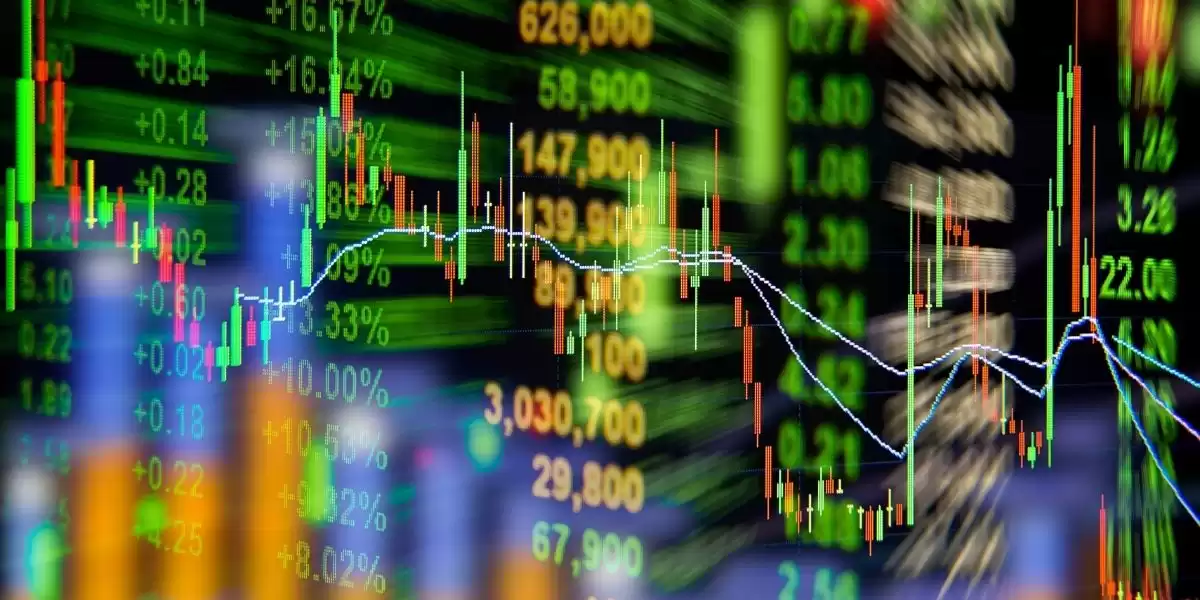-
 Bitcoin
Bitcoin $119000
-2.21% -
 Ethereum
Ethereum $4315
1.01% -
 XRP
XRP $3.151
-3.11% -
 Tether USDt
Tether USDt $0.0000
0.00% -
 BNB
BNB $808.5
-0.71% -
 Solana
Solana $175.8
-4.21% -
 USDC
USDC $0.9999
0.00% -
 Dogecoin
Dogecoin $0.2250
-3.92% -
 TRON
TRON $0.3469
1.77% -
 Cardano
Cardano $0.7818
-3.81% -
 Chainlink
Chainlink $21.47
-2.10% -
 Hyperliquid
Hyperliquid $43.30
-6.81% -
 Stellar
Stellar $0.4370
-2.84% -
 Sui
Sui $3.682
-4.40% -
 Bitcoin Cash
Bitcoin Cash $590.8
2.67% -
 Hedera
Hedera $0.2484
-5.20% -
 Ethena USDe
Ethena USDe $1.001
0.00% -
 Avalanche
Avalanche $23.10
-4.29% -
 Litecoin
Litecoin $119.2
-3.96% -
 Toncoin
Toncoin $3.409
0.90% -
 UNUS SED LEO
UNUS SED LEO $9.016
-1.29% -
 Shiba Inu
Shiba Inu $0.00001304
-3.82% -
 Uniswap
Uniswap $11.18
1.33% -
 Polkadot
Polkadot $3.913
-3.51% -
 Cronos
Cronos $0.1672
-3.08% -
 Dai
Dai $1.000
0.02% -
 Ethena
Ethena $0.7899
-4.70% -
 Bitget Token
Bitget Token $4.400
-1.23% -
 Pepe
Pepe $0.00001132
-5.93% -
 Monero
Monero $257.9
-6.44%
What is the perpetual contract margin rate?
In the realm of perpetual contracts, the margin rate serves as a crucial risk management tool, influencing trading power, protecting against losses, and ensuring the stability of the exchange.
Dec 07, 2024 at 04:46 am

Understanding Perpetual Contract Margin Rate in the Blockchain Realm
In the dynamic world of blockchain and cryptocurrency trading, perpetual contracts have emerged as a popular instrument for speculating on the future value of digital assets. A key concept associated with perpetual contracts is the margin rate, which plays a crucial role in managing risk and ensuring the stability of the trading environment.
Delving into Perpetual Contracts
Perpetual contracts are a type of derivative instrument that enables traders to speculate on the future price of an underlying asset, such as Bitcoin or Ethereum, without having to take physical delivery of the asset. Unlike traditional futures contracts, which expire on a specific date, perpetual contracts do not have an expiry date and can be held or traded indefinitely.
Significance of Margin Rate
In perpetual contract trading, the margin rate is a percentage of the notional value of a contract that traders must deposit as collateral. This collateral serves as security for the exchange against potential losses incurred by the trader. Maintaining an adequate margin rate is essential for traders to avoid margin calls and ensure the smooth functioning of the trading platform.
How Margin Rate Affects Trading
The margin rate directly impacts several aspects of perpetual contract trading:
- Trading Power: A higher margin rate implies a lower trading power, as traders must deposit more collateral for the same notional value of contracts. Conversely, a lower margin rate provides higher trading power, allowing traders to control a larger position size with a smaller deposit.
- Risk Management: A higher margin rate increases the buffer against potential losses, reducing the risk of margin calls and liquidations. A lower margin rate, while offering higher trading power, comes with increased risk exposure.
- Exchange Stability: Maintaining a sufficient overall margin rate ensures the stability of the exchange by mitigating the risk of defaults and protecting the interests of all participants in the trading ecosystem.
How Margin Rate is Determined
Exchanges typically set the margin rate for perpetual contracts based on various factors, including:
- Underlying Asset Volatility: Assets with higher price volatility generally require higher margin rates to manage risk.
- Market Conditions: During periods of high market volatility or uncertainty, exchanges may increase margin rates to enhance stability and reduce the likelihood of liquidations.
- Exchange Risk Management Policies: Each exchange has its own risk management policies and procedures, which influence the setting of margin rates.
Best Practices for Margin Management
To effectively manage perpetual contract margin rates, traders should consider the following best practices:
- Understanding Margin Requirements: Familiarize yourself with the margin rates set by the exchange and the factors that influence them.
- Adequate Collateral: Ensure you maintain sufficient collateral to cover potential losses and avoid margin calls.
- Risk-Adjusted Trading: Calculate the potential risk-to-reward ratio of your trades and adjust your margin accordingly.
- Monitoring Market Conditions: Stay informed about market conditions and adjust your margin rate as necessary during periods of increased volatility.
- Hedging Strategies: Consider implementing hedging strategies to reduce risk exposure and mitigate the impact of adverse price movements.
Disclaimer:info@kdj.com
The information provided is not trading advice. kdj.com does not assume any responsibility for any investments made based on the information provided in this article. Cryptocurrencies are highly volatile and it is highly recommended that you invest with caution after thorough research!
If you believe that the content used on this website infringes your copyright, please contact us immediately (info@kdj.com) and we will delete it promptly.
- Arc Blockchain: Circle's Layer-1 Play Amidst $428 Million Loss
- 2025-08-12 20:30:13
- XRP Price: Riding the Bull Cycle Wave or Hitting a Wall?
- 2025-08-12 20:50:12
- Cloud Mining in 2025: Chasing Passive Income and High Returns
- 2025-08-12 20:30:13
- Solana Price, Meme Coins, and 100x Gains: What's the Hype?
- 2025-08-12 20:50:12
- Japan, Bitcoin, and Treasuries: A New Era of Corporate Finance?
- 2025-08-12 18:30:12
- Bitcoin Bull Market: Decoding the Indicators for the Next Big Move
- 2025-08-12 18:30:12
Related knowledge

Is it possible to adjust the leverage on an open position on KuCoin?
Aug 09,2025 at 08:21pm
Understanding Leverage in KuCoin Futures TradingLeverage in KuCoin Futures allows traders to amplify their exposure to price movements by borrowing fu...

What cryptocurrencies are supported as collateral on KuCoin Futures?
Aug 11,2025 at 04:21am
Overview of KuCoin Futures and Collateral MechanismKuCoin Futures is a derivatives trading platform that allows users to trade perpetual and delivery ...

What is the difference between realized and unrealized PNL on KuCoin?
Aug 09,2025 at 01:49am
Understanding Realized and Unrealized PNL on KuCoinWhen trading on KuCoin, especially in futures and perpetual contracts, understanding the distinctio...

How does KuCoin Futures compare against Binance Futures in terms of features?
Aug 09,2025 at 03:22am
Trading Interface and User ExperienceThe trading interface is a critical component when comparing KuCoin Futures and Binance Futures, as it directly i...

How do funding fees on KuCoin Futures affect my overall profit?
Aug 09,2025 at 08:22am
Understanding Funding Fees on KuCoin FuturesFunding fees on KuCoin Futures are periodic payments exchanged between long and short position holders to ...

What is the distinction between mark price and last price on KuCoin?
Aug 08,2025 at 01:58pm
Understanding the Basics of Price in Cryptocurrency TradingIn cryptocurrency exchanges like KuCoin, two key price indicators frequently appear on trad...

Is it possible to adjust the leverage on an open position on KuCoin?
Aug 09,2025 at 08:21pm
Understanding Leverage in KuCoin Futures TradingLeverage in KuCoin Futures allows traders to amplify their exposure to price movements by borrowing fu...

What cryptocurrencies are supported as collateral on KuCoin Futures?
Aug 11,2025 at 04:21am
Overview of KuCoin Futures and Collateral MechanismKuCoin Futures is a derivatives trading platform that allows users to trade perpetual and delivery ...

What is the difference between realized and unrealized PNL on KuCoin?
Aug 09,2025 at 01:49am
Understanding Realized and Unrealized PNL on KuCoinWhen trading on KuCoin, especially in futures and perpetual contracts, understanding the distinctio...

How does KuCoin Futures compare against Binance Futures in terms of features?
Aug 09,2025 at 03:22am
Trading Interface and User ExperienceThe trading interface is a critical component when comparing KuCoin Futures and Binance Futures, as it directly i...

How do funding fees on KuCoin Futures affect my overall profit?
Aug 09,2025 at 08:22am
Understanding Funding Fees on KuCoin FuturesFunding fees on KuCoin Futures are periodic payments exchanged between long and short position holders to ...

What is the distinction between mark price and last price on KuCoin?
Aug 08,2025 at 01:58pm
Understanding the Basics of Price in Cryptocurrency TradingIn cryptocurrency exchanges like KuCoin, two key price indicators frequently appear on trad...
See all articles

























































































